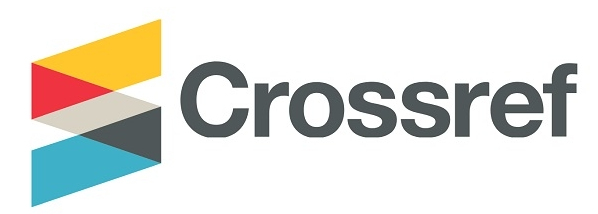THE IMPLEMENTATION OF CARTOON VIDEO TO IMPROVE THE IMPLEMENTATION OF CARTOON VIDEO TO IMPROVE THE EIGHTH-GRADE STUDENTS’ PRONUNCIATION SKILL AT SMP NEGERI 12 DENPASAR
DOI:
https://doi.org/10.36526/ln.v7i2.3112Keywords:
Pronunciation, CAR, Cartoon VideoAbstract
Pronunciation is one of the essential nouns that are based on oral and basic forms skill to speak English and other languages. Learning English pronunciation can help students to pronounce words and sentences correctly. Clear pronunciation makes it easy for students to understand and produce intelligible sounds, therefore pronunciation learning has become an important aspect in teaching. This research used the Classroom Action Research (CAR) methodology. The result showed that the best implementation of cartoon videos was proven to improve students’ pronunciation skills. In order to achieve the best implementation of cartoon video to improve students’ pronunciation skill, there were three factors that must be considered: Learning system, speech rate, and the students’ frequency in practicing pronunciation. Besides, the findings also showed that most of the students had a positive perception of the use of cartoon videos in learning pronunciation. Most of the students felt helped in learning pronunciation using cartoon videos. They also felt more interested and motivated in pronunciation learning process. Therefore, it can be concluded that the cartoon videos was the suitable media to teach pronunciaciton and had been proven to improve students’ pronunciation skills through its best implementation.
References
Andriani Putri, S., Amri, S., & Ahmad. (2020). The students’ difficulties factors in speaking. J-Shelves of Indragiri (JSI), 01(02), 115–129. https://doi.org/10.32520/jsi.v1i2.1059
Ariyani, D., Marbun, R., Riyanti, D., Education, E., Program, S., Education, A., Nyaring, T. M., & Pendek, T. (2018). Improving students’ pronunciation by using reading aloud in junior high school. 1–9.
Aydoğan, H. (2014). The four basic language skills , whole language & intergrated skill approach in mainstream university classrooms in turkey. Mediterranean Journal of Social Sciences, 05(09), 672–680. https://doi.org/10.5901/mjss.2014.v5n9p672
Bajrami, L., & Ismaili, M. (2016). The Role of video materials in EFL classrooms. Procedia - Social and Behavioral Sciences, 232(April), 502–506. https://doi.org/10.1016/j.sbspro.2016.10.068
Davis, F. (1989). Perceived usefulness, perceived ease of use, and user acceptance of information technology. MIS Quarterly, 13(03). https://doi.org/https://doi.org/10.2307/249008
Dewi, R., Mujiyanto, J., & Sukrisno, A. (2017). The influence of brebes javanese dialect toward students’ pronunciation of english speech sounds. English Language and Literature International Conference (ELLiC) Proceedings, 01, 189–199. https://jurnal.unimus.ac.id/index.php/ELLIC/article/view/2 468/2492
Efriana, L. (2021). Problems of online learning during covid-19 pandemic in EFL classroom and the solution. Journal of English Language Teaching and Literature, 02(01), 38–47.
Fujita, R. (2017). Effects of speech rate and background noise on EFL learners’ listening comprehension of different types of materials. The Journal of Asia TEFL, 14(04). https://doi.org/10.18823/asiatefl.2017.14.4.4.638
Gilakjani, A. P. (2016). English pronunciation instruction: A literature review. International Journal of Research in English Education, 01(01). https://doi.org/10.5539/elt.v5n4p96
Hanik. (2011). Rubrik penilaian pembelajaran bahasa inggris.
Hayati, A. (2010). The effect of speech rate on listening comprehension of EFL learners. Creative Education, 02, 107–114. https://doi.org/10.4236/ce. 2010.12016
Hitoniah, N. (2016). The use of english video to improve students’ pronunciation. Semarang State University.
Ikhsan, M. K. (2017). Factors influencing students ` pronunciation mastery at english department of STKIP PGRI west sumatera. AL-TA’LIM Journal, 24(02), 110–117.
Kemmis, S., & McTaggart, R. (1988). The action research planner (Third Edit). Deakin University Press.
Kosasih, M. M. (2021). Factors affecting indonesian students in learning english pronunciation. International Research in Higher Education. https://doi.org/10.5430/irhe.v6n3p13
Mandasari, B., & Aminatun, D. (2020). Improving students’ speaking performance through vlog. English Education:Journal of English Teaching and Research, 05(02), 136–142.
Mardianti, C. R. (2018). Students’ perception of using animation video in teaching listening of narrative text. Syarif Hidayatullah State Islamic University.
Marzali, A.-. (2016). Menulis Kajian Literatur. ETNOSIA: Jurnal Etnografi Indonesia, 01(02), 27. https://doi.org/10.31947/etnosia.v1i2.1613
Napitupulu, R. M. (2020). Dampak pandemi covid-19 terhadap kepuasan pembelajaran jarak jauh. Jurnal Inovasi Teknologi Pendidikan, 07(01), 23–33.
Oktaviani, L., & Mandasari, B. (2020). Powtoon: a digital medium to optimize students’ cultural presentation in ELT classroom. Teknosastik, 18(01), 33–41. https://doi.org/https://dx.doi.org/10.33365/ts.v18i1.526
Pamungkas, F. D., Sumardi, & Rochsantiningsih, D. (2019). Improving students pronunciation using video dubbing. Academic Journal Perspective: Language, Education, and Literature, 07(01), 11–17.
Prashant, P. (2018). Importance of pronunciation in english language communication. Pronunciation and Communication, 07(02), 15–20.
Downloads
Published
How to Cite
Issue
Section
License
This work is licensed under a Creative Commons Attribution-ShareAlike 4.0 International License.


















